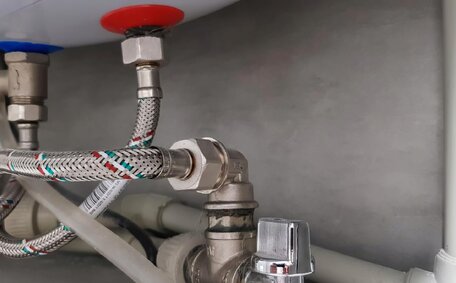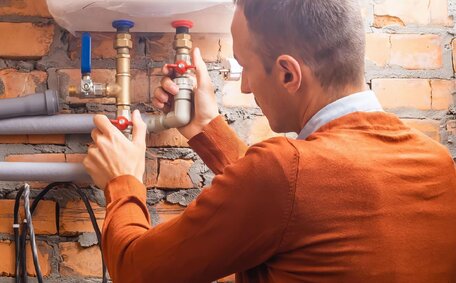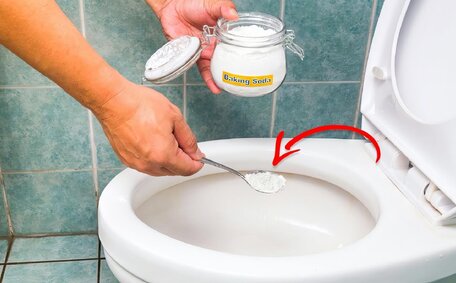Introduction to Gas Fitting for New Home Construction
Gas fitting is crucial in new home construction, requiring specific competencies to ensure a reliable energy source. Over 60% of Australian homes use natural gas for cooking, heating, and hot water. Connecting new homes to the gas network is crucial during construction to establish a reliable energy source.
At North Epping Plumbing, our licensed gas fitters specialise in all types of gas fitting for hot water systems in both residential and commercial properties.
Whether it’s fitting gas pipes, attaching appliances, locating the gas meter box, or liaising with your chosen energy retailer for your gas connection, we guarantee a smooth process and can offer assistance from start to finish.
This guide will cover what you need to know about the gas fitting connection process when constructing a new home, including regulations, safety requirements, expenses, and tips for seamless integration.
The Shift from Gas to Electricity in New Homes
In recent years, the trend towards electrification has led to moving away from gas connections in new constructions across Australia.
This shift has been driven by government policy and consumer preferences, particularly in new dwellings. In response, state and territory governments are introducing policies that effectively ban gas connections or limit residential gas connections in new developments.
In 2021 the Victorian government announced a plan to ban new gas connections in homes starting from 2025. The ACT has legislated to achieve net zero emissions from new homes by 2025, effectively banning gas connections.
Nationally, the National Construction Code is expected to be updated to make all-electric buildings the default for new homes by 2023.
For consumers, electrification appeals because it leads to lower energy bills and a reduction in gas emissions. All-electric new homes enable homeowners to utilise renewable energy, offering savings on running costs and allowing for integrated system designs.
Last year, more than 80 per cent of newly established residences opted for all-electric setups, exemplifying a shift in household energy usage.
This development has implications for planning gas fittings in modern structures. Both your builder and your plumber must be aware of legislative changes and prepared to adjust to the decreased reliance on gas establishing a new connection.
Transitioning from gas cooktops, new homes will need specialised services for alternatives, including installing induction cooktops and electric heat pump water systems.
North Epping Plumbing provides tailored advice on electrical and gas connections for new developments, including expert planning for plumbing and drainage systems. Reach out today to learn more about how we can assist with providing all plumbing solutions for your upcoming project.
Victoria’s Ban on Gas Connections for New Homes
In August 2021, the Victorian government announced that it will ban all gas connections in new homes starting from 2025. Under this policy, new residential buildings won’t have gas infrastructure installed post-2025.
The gas ban is a crucial component of Victoria’s emissions reduction plan aiming to curtail greenhouse gas contributions and achieve net zero by 2050. Residential homes contribute to approximately 12% of the state’s emissions, with gas usage accounting for 17% of that figure.
With the state government’s mandate and requirements new homes to operate solely on electricity, it’s projected that Victoria could accomplish a reduction in emissions totalling 1 million tonnes annually by 2030. This is equivalent to taking over 200,000 cars off the road annually.
Homeowners and builders must adapt their strategies for new properties to exclude gas and instead choose systems compatible with non-gas cooking and heating. Instead, make sure houses are fitted with electrical connections for technologies like induction cooktops, heat pump hot water systems, and reverse cycle heating and cooling.
North Epping Plumbing offers professional guidance for new builds, helping ensure all-electric homes are both efficient and comfortable, We stay up-to-date on the regulations around gas to ensure your new build fully complies with Victoria’s plan for electrification.
While representing a significant change, phasing out gas connections positions Victoria at the forefront of sustainable design construction practises. As master plumbers and licensed gas fitters, our priority is a seamless transition for our clients.
Gas Connection Regulations and Permit Requirements
Consider the key regulations and permit requirements for gas connections in new home constructions. Under the Gas Safety Act 1997, all gasfitting work in Victoria must be done by a licenced gas fitter.
To establish a new gas connection, You need to apply with your gas distributor by submitting your application. Your location determines whether you’ll deal with Australian Gas Networks, Multinet, or Ausnet Services. The gas distributor will help find if gas available at your property before greenlighting the connection request.
You must also establish legal permits from your local council or pertinent building authority. These will verify that your new gas installation complies with the Plumbing Regulations 2018 and national construction codes.
After confirming the availability of gas and securing permits, your selected gas fitter can quickly establish your gas connection. This involves running a gas service line to your gas meter location, installing and pressure testing your gas pipes, connecting appliances and issuing a Certificate of Compliance.
All procedures must adhere to strict safety protocols, getting the site conditions ready and ensuring optimal conditions for use. Gas fitters are required to notify Energy Safe Victoria before commencing work and after completing the gas installation. Proper documentation must also be issued to you and the regulator for compliance purposes.
With over 60 years of experience work, our team has all the expertise to perform the skilful work described for complete gas services provision from inception to completion. Contact us today to discuss the regulations and permits you’ll need for your new gas connection.
Planning and Designing the Gas System Layout
When planning and designing a Type B gas system layout for a new home, there are multiple vital factors to consider:
Appliance Connections
The type and positioning of gas appliances will significantly influence your system’s design. Common gas appliances include:
- Gas cooktop and oven
- Gas hot water system
- Gas space heaters
- Gas fireplace
You’ll want to ensure there’s ample space to install each of your appliances, taking into account the necessary service clearances. During planning, your plumber can recommend the most suitable locations for efficient setup and optimal gas functionality.
Gas Line Placement
Gas lines must be laid from the gas meter to each spot where you’ll install your appliances. Following safety regulations, gas pipes should be:
- Placed through areas that allow access for installation and repairs.
- Kept at least 300mm away from electrical lines.
- Clear of damp environments like wet areas.
Your gas fitter will determine the optimal pipe routes through the home to minimise complexity and risks.
Gas Metre Location
Your gas meter location should be:
- Easily accessible from the street for the utility provider.
- Well-ventilated and compliant with clearance requirements.
- Protected from vehicle impact and other risks.
Your gas fitter will work with you to determine the most suitable gas meter location.
Safety Systems
Gas safety systems are mandatory, including:
- Isolation valves to shut off gas flow.
- Pressure regulation to control gas pressure.
- Leak detection systems.
- Adequate ventilation for combustion appliances.
Selecting Gas Appliances and Planning Connections
Selecting gas appliances and planning their connections is a vital step when building a new home. With the shift away from gas underway, careful consideration is required when choosing gas appliances to ensure your new home aligns with energy efficiency goals while still meeting your needs.
If opting for gas appliances, recommended options include:
- Gas cooktops - High-powered gas cooktops provide responsive, precise temperature control for stove-top cooking. Models with sealed burners and electric ignition are more energy-efficient.
- Gas ovens - For baking, gas ovens with electronic ignition deliver even heat distribution and temperature control. Look for energy ratings of 5 stars or higher.
- Natural gas your systems, like regular storage or instantaneous models, can efficiently provide hot water on demand.
- Gas space heaters - Localised gas heating can be useful for zones that need extra warmth. Ensure proper ventilation is planned.
When installing gas appliances, factors like location, ventilation, gas supply and fluing need consideration. Your gas fitter can advise on positioning appliances so gas line routes are optimal and flueing meets clearance requirements. Isolating valves will also be fitted to enable safe shut-off.
Under current Victorian regulations until 2025, new gas appliance installations must meet a minimum energy efficiency standard. After the gas connection ban takes effect, alternatives like induction cooktops and heat pump systems will take the place of gas in new builds.
At North Epping Plumbing, Our skilled team helps clients navigate water service options and the connection process, whether it involves gas integration or a shift to electric solutions. Contact us today to discuss the right systems for your new home.
Installing Gas Pipes and Components
The installation of gas pipes and components is a crucial process that must be handled by qualified and licenced gas fitters. In new home construction, the primary aim when fitting gas lines is to ensure the system is safe, efficient, and compliant.
There are strict regulations and standards in place for installing gas infrastructure in residential settings across Australia. These procedures must comply with strict standards set out in key documents, including:
- AS/NZS 5601.1:2013 - Gas installations
- AS/NZS 4645.1:2018 - Gas distribution networks
- The National Construction Code
- State/territory gas fitting regulations such as the Victorian Gas Safety Act 1997
When installing gas lines in your new home, For example, you should know that copper is the preferred material. Copper pipes are durable, resistant to corrosion and can withstand the high pressures involved in gas supply. Hard-drawn copper pipe is recommended and must comply with AS/NZS 1571.
Pipe sizes are determined by the gas load required, length of run and number of appliance connections. For residential applications, common sizes range from 12mm to 25mm in diameter. To maintain safety, gas lines are clearly marked as 'Gas’ along their length.
Key components in a domestic gas system include:
- Isolation valves - Installed before the gas metre and at each appliance to enable emergency shutdowns.
- Pressure regulators - Lowers and controls gas pressure at safe levels.
- Metres - Measures usage and must be Australian Standard approved.
- Flueing - Safely removes combustion byproducts.
Proper jointing techniques must be applied when assembling gas pipeworks, using methods like brazing, compression fittings or threaded connections sealed with approved compounds.
Inspections and Safety Compliance for Gas Work
Guaranteeing that professionals from our team install gas components as part of our service to meet necessary safety benchmarks with thorough inspections and adherence to compliance measures is critical. At North Epping Plumbing, we take gas safety seriously and are committed to following all required regulations and best practises.
In Victoria, the Gas Safety Act 1997 mandates that all gasfitting work must be inspected and certified as compliant by Energy Safe Victoria. There are penalties for non-compliance.
For new gas installations, evaluations will occur at least two pivotal stages:
- Rough-in inspection: This inspects gas pipework and components before any concealed areas are sealed.
- Final inspection this verifies the entire gas installation is completed to the required standard.
Our gas fitters schedule inspections as required when completing your new gas connection, providing the necessary Certificate of Compliance. We’ll also submit the required paperwork to Energy Safe Victoria to formally record the satisfactory inspection outcomes.
Beyond inspections, we implement comprehensive safety measures in all our gas work, such as:
- Using only government-approved materials and components.
- Conducting stringent leak and pressure tests.
- Ensuring correct appliance fluing.
- Providing homeowner gas safety information.
- Isolating the gas system prior to appliance connection.
With decades of licenced experience, we can answer any questions you have about gas safety compliance. Contact North Epping Plumbing to ensure your next gas installation meets the highest safety standards.
Hiring Qualified Gas Fitters for New Homes
Engaging fully licensed and insured gas fitters is crucial for gas system installations in new buildings. Reputable gas fitters like our team at North Epping Plumbing can provide certification of their qualifications. Gasfitting credentials should be validated, and the fitter should be affiliated with industry bodies.
They will have completed the necessary training and assessments to be registered and legally approved to carry out gas work. Don’t compromise - poorly executed gas work poses risks, regardless of size, including leaks, explosions, and carbon monoxide poisoning. Entrusting your new gas installation to qualified professionals ensures all work complies with Australian standards and regulations for safety.
The Cost of Gas vs Electricity for New Homes
During the building process for a new home, deciding between gas or electric systems is a key consideration from both upfront cost and ongoing running cost perspectives. Gas often has lower initial connection costs compared to upgrading electrical capacity for an all-electric home. However, gas appliances typically have higher energy costs in the long run.
Electricity prices have been falling, while gas prices are increasing. And with solar PV systems, renewable energy can help lower your power bills your household incurs.
Gas water supply systems are typically priced between $1,000-$1,500 for installation, yet the estimated energy costs range from $400-$800 annually. Heat pump systems cost more upfront at $2,000-$4,000 but have energy bills of only $200-$300 annually.
Considering the long term, those who continue to use gas may miss out on savings of $2,000-$4,500 when compared to an electric heat pump system versus traditional gas hot water expense. With induction cooktops, heat pumps and solar, all-electric new builds provide energy bill savings along with environmental benefits over gas-connected homes.






